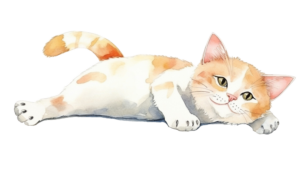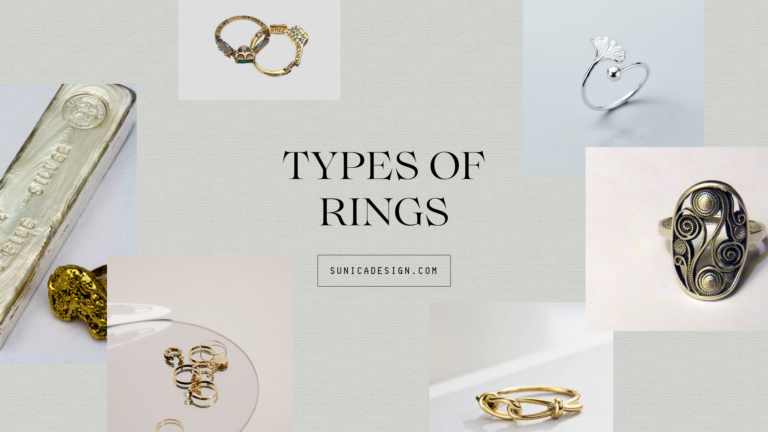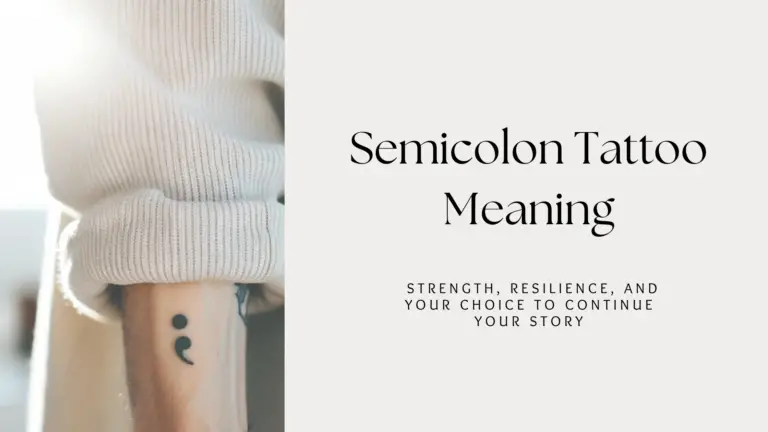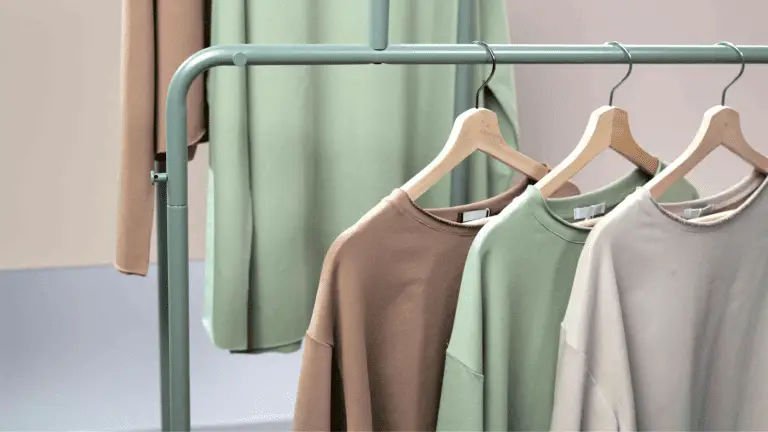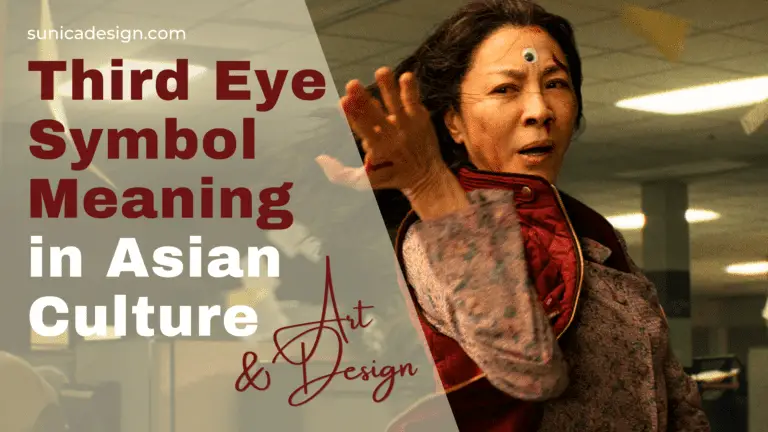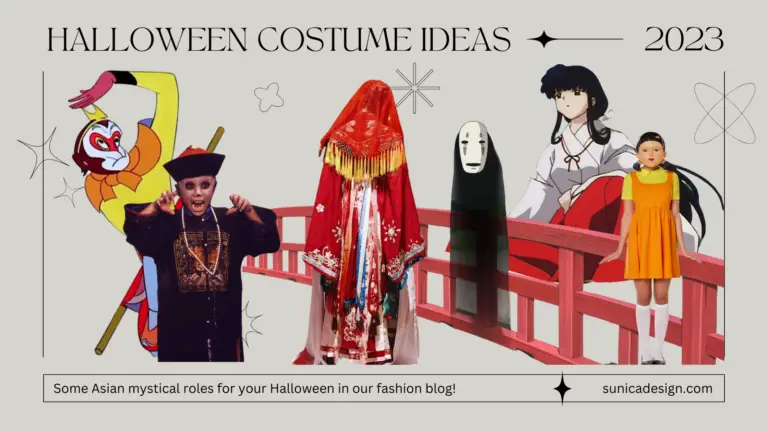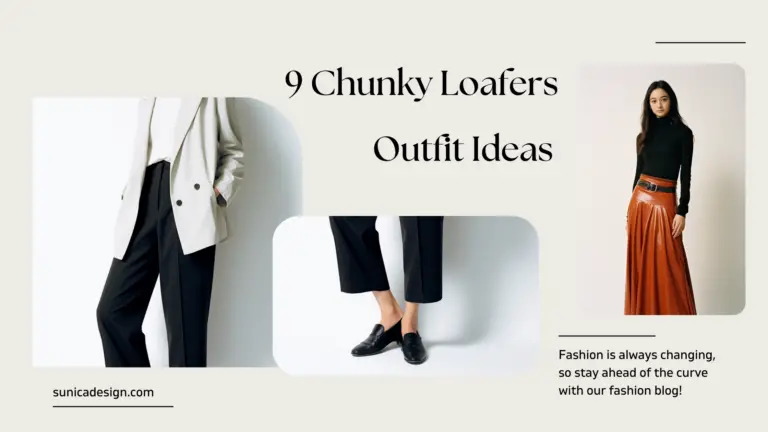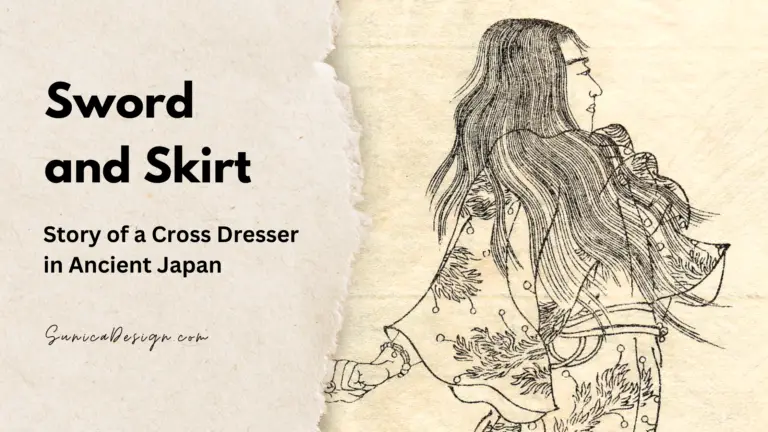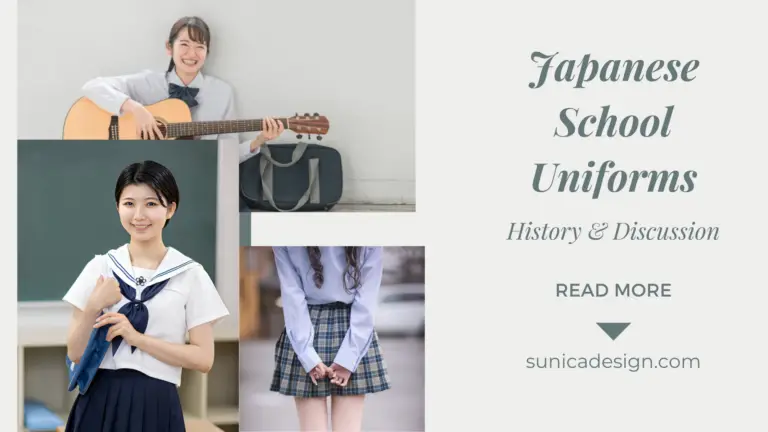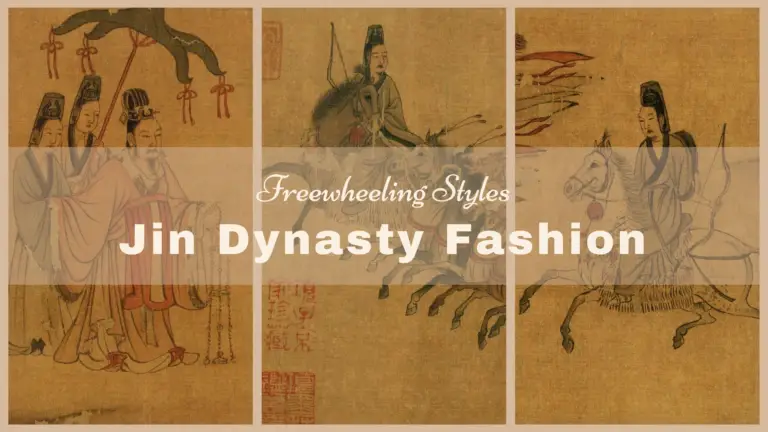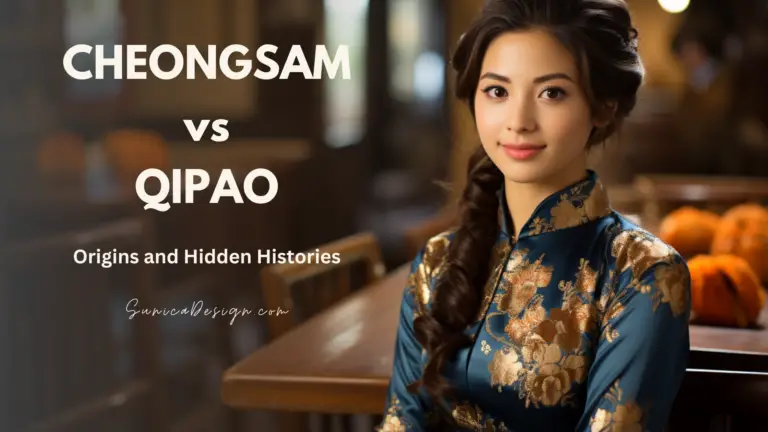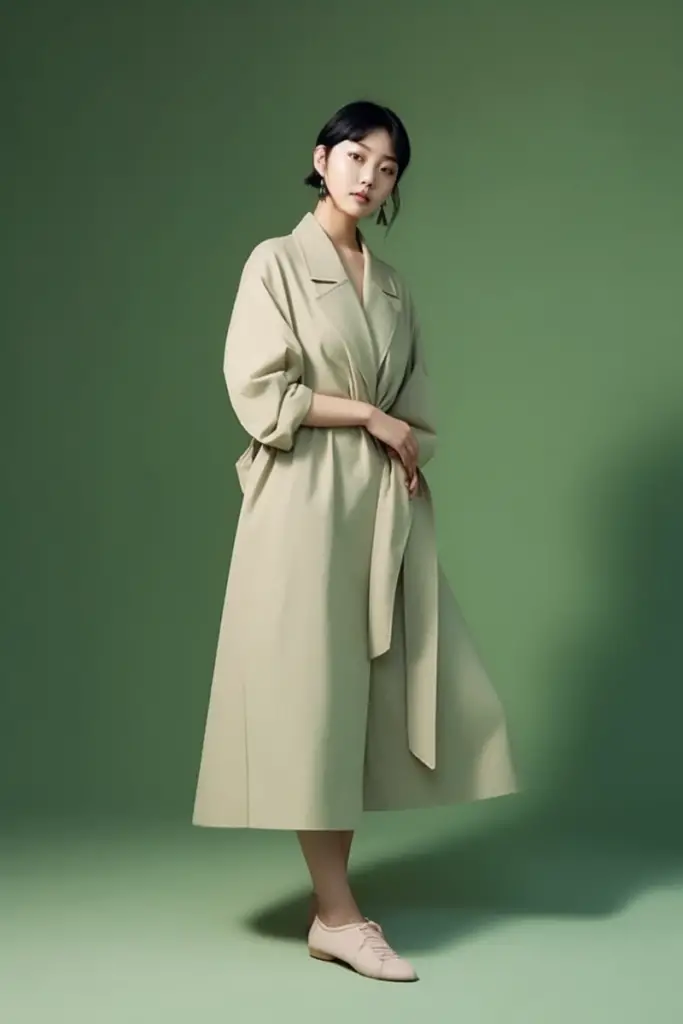Embarking on a journey through the annals of fashion history, we find ourselves transported to a time of elegance and refinement – the Song Dynasty! As the flamboyant Tang Dynasty faded into the past, the Song era emerged, embracing simplicity and grace in clothing design. Politically constrained by Neo-Confucianism and cautious foreign policies, the fashion of this period moved away from ostentation and adopted a more conservative and modest aesthetic.
So let’s unravel the timeless allure of Song Dynasty clothing, as we explore its distinctive styles and demure colors that continue to inspire fashion enthusiasts today.
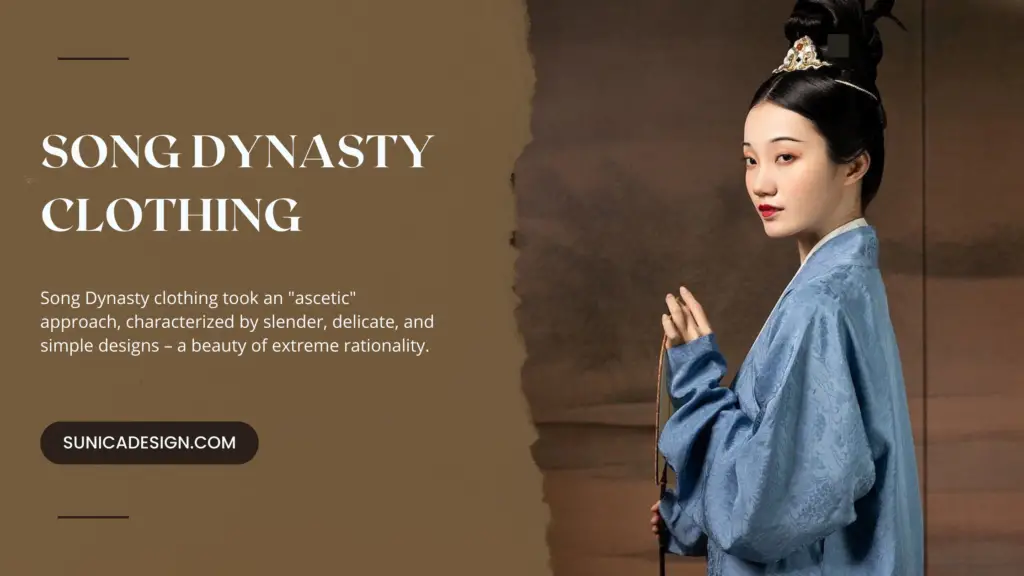
Neo-Confucianism and Its Impact on Song Dynasty Aesthetics
The Cheng-Zhu School, one of the main branches of Neo-Confucianism, profoundly impacted the aesthetic sensibilities of the Song Dynasty. Its core idea is “preserving Heavenly principles and eradicating human desires.” This philosophy limited the expression of emotions and individuality through clothing, in stark contrast to the exuberant Tang Dynasty. As a result, Song Dynasty clothing took a more “ascetic” approach, characterized by slender, delicate, and simple designs – a beauty of extreme rationality.
The Song Dynasty scholars had a penchant for evaluating artistic styles and realms based on “atmosphere,” believing that natural, unpretentious qualities represented the pinnacle of beauty. This preference was especially evident in the color palette of Song Dynasty clothing. Light, subdued hues became the go-to choice for people of all ages and genders, reflecting a more muted vibe.
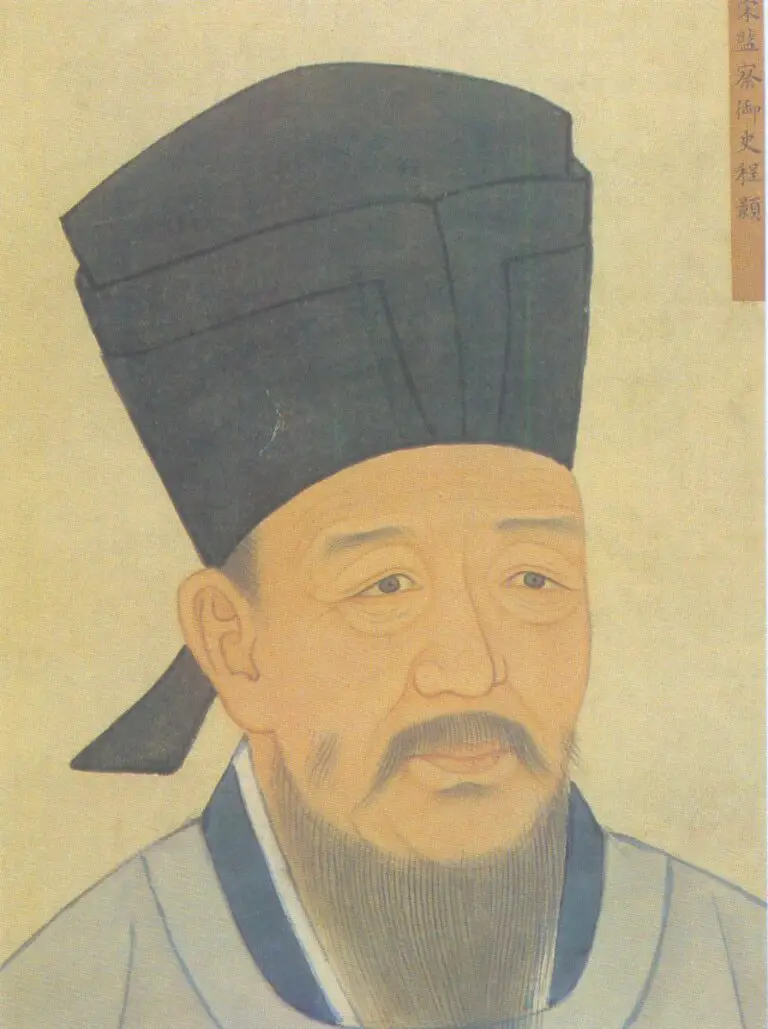
Beauty Standards in Song Dynasty
When it comes to beauty standards, the Song Dynasty took a different route compared to the plump-is-pretty ideal of the Tang Dynasty. Song society favored a delicate, fragile, and even somewhat frail appearance for women. This preference reflected the conservative mindset of the time, with people shying away from the bold and daring fashion of the Tang era. Instead, they embraced a more ethereal, slender silhouette in clothing.
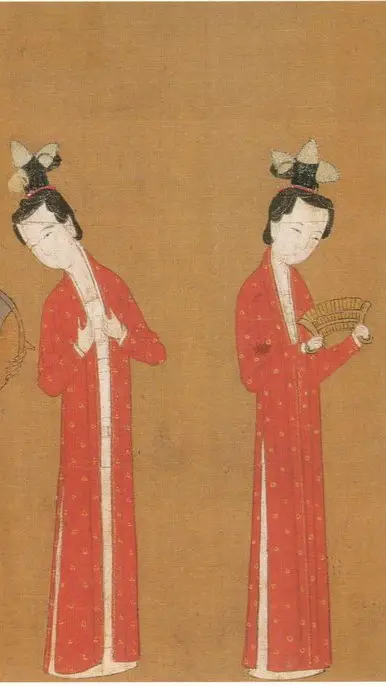
As for men, the brawny, weapon-wielding Tang image took a backseat to a more scholarly, refined persona during the Song Dynasty. You wouldn’t find an arsenal of weapons in a Song intellectual’s home. Instead, they’d be more inclined to adorn their heads with flowers and soft decorations – talk about a “blooming” sense of style! Just like women, the “ideal” Song Dynasty man was often portrayed as an elegant, otherworldly literatus.
Song Dynasty Clothing for Women
While the Song Dynasty’s overall aesthetic leaned towards simplicity and elegance, it would be a mistake to assume that all women would obey the rules! In fact, the fashion of this era offered a delightful mix of subtlety and daring, with some ensembles that could still turn heads and make a statement. So, let’s dive into the fascinating world of women’s fashion during this period, where sophistication met vivacity, and fashionistas found creative ways to express themselves through their attire.
Tube Top (抹胸 mò xiōng)
The Moxiong, a close-fitting garment worn by Song Dynasty women, served as the innermost layer of clothing. It was much like a modern-day tube top, providing coverage and protection for the chest area. During the Song era, women invented a unique style, which was wearing the tube top beneath a longer garment, with the front panels left open and unbuttoned.
This innovative style turned the traditional tube top into a visible part of the outerwear, creating an “innerwear-as-outerwear” look. This daring fashion choice boldly showcased a woman’s curves. It proved that Song Dynasty clothing wasn’t all about conservative restraint, but a special beauty created by women under strict rules.
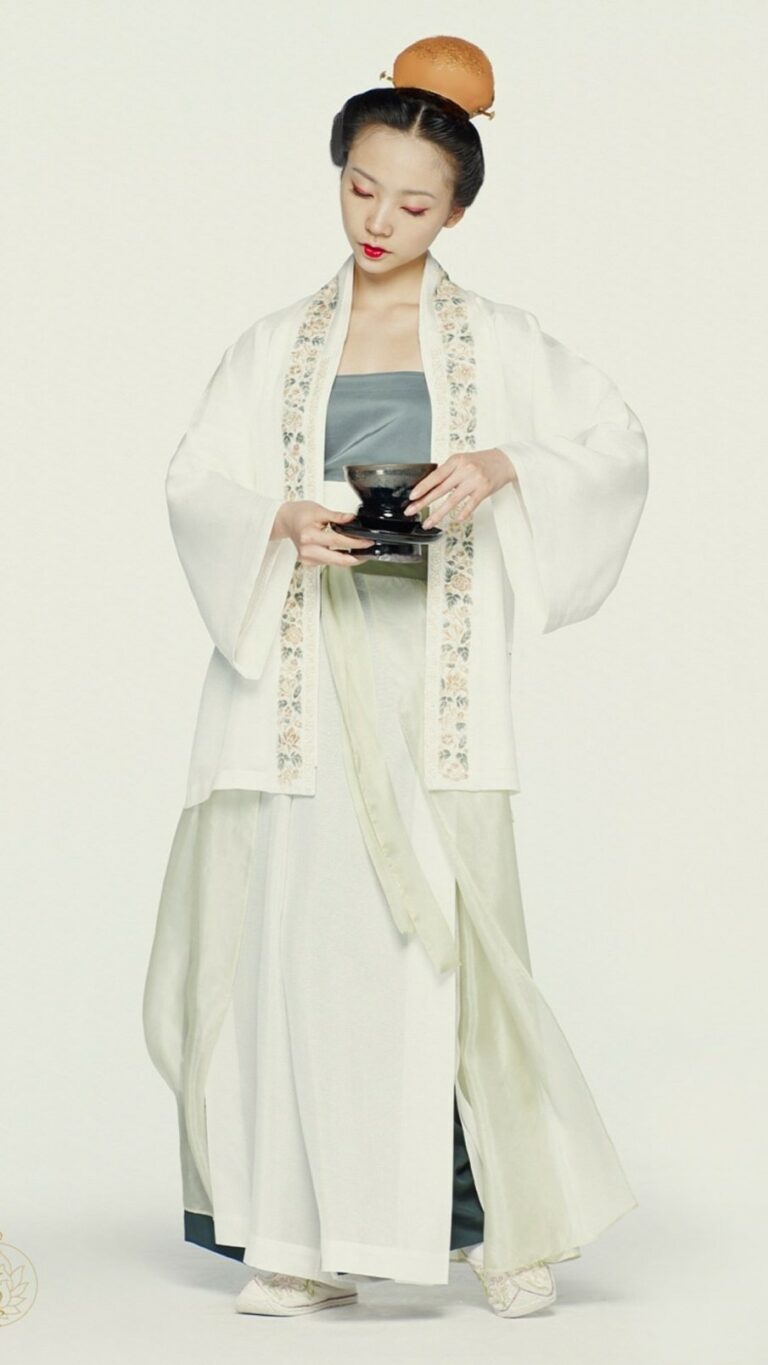
Wide Sleeves (大袖衫 dà xiù shān)
The garment with wide sleeves was a lasting fashion staple from the Tang Dynasty that continued to be popular in the Song era. Characterized by its impressively large sleeves that reached down to the knees, it was aptly named ” Dà Xiù Shān,” meaning “garment with wide sleeves.”
Originally worn by emperors and their consorts, the Daxiu Shan eventually made its way into the wardrobes of wealthy women as the economy flourished. It became a luxurious dress reserved for high-class women, often worn during important or special occasions like weddings.
When wearing this elegant garment, ladies often accessorized with an array of exquisite jewelry and makeup, including hair ornaments, facial adornments, earrings, and necklaces. The Daxiu Shan truly was a testament to the opulence and splendor of women’s clothing in the Song Dynasty.
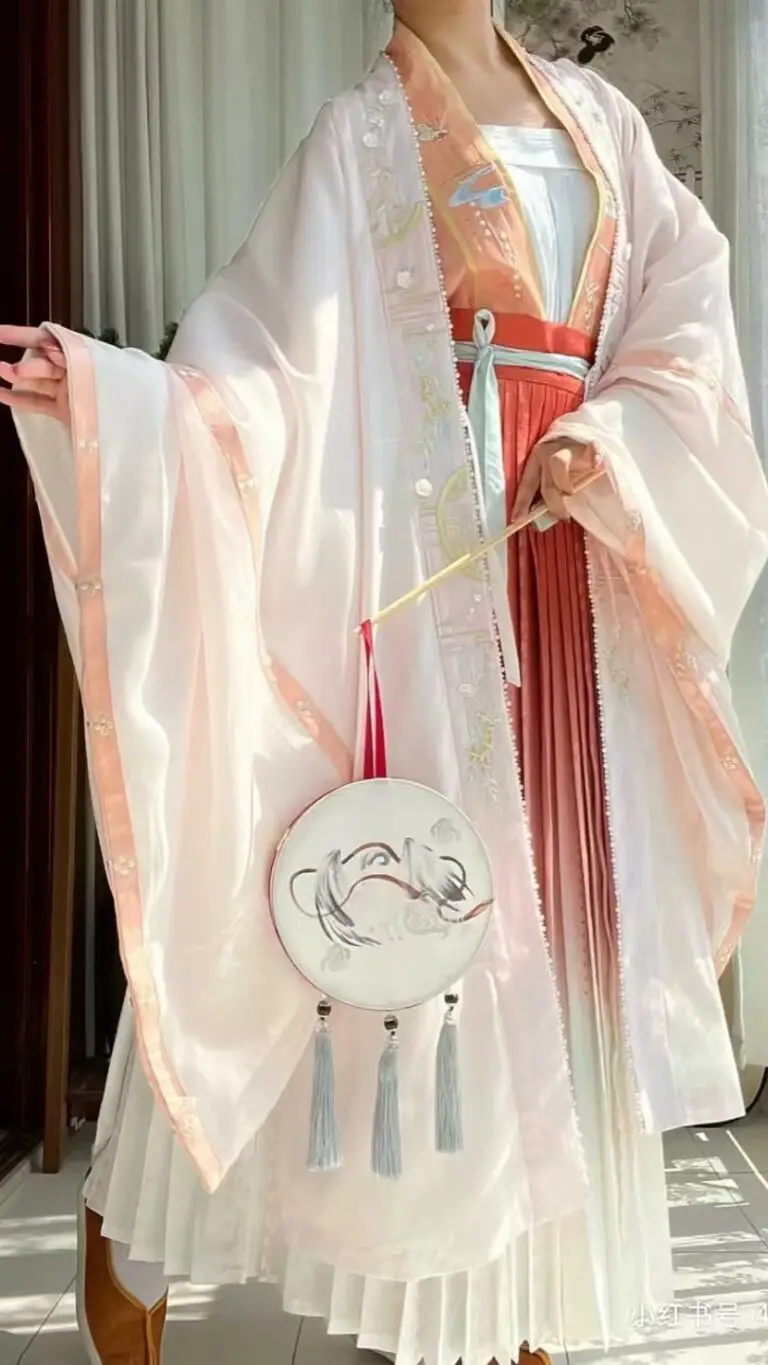
Luo Qun (罗裙 luó qún)
Song Dynasty women had a penchant for skirts, most of which were made from a gauzy silk fabric called “luo,” hence the name “Luo Qun.” (Qun means “skirt” in Chinese.) These long skirts featured an abundance of pleats and a generous circumference, creating a stunning three-dimensional effect. The pleats rippled gracefully with every step, imbuing the Luoqun with an irresistible charm.
There was a wide variety of Luo Qun during the Song era, including hundred-pleat, single-piece, two-piece, and even practical skirts designed for women to ride. The craftsmanship behind these skirts was nothing short of exquisite. Embroidery and gradient dyeing techniques were employed. Some skirts were even dyed with the tulip flower, infusing the fabric with the beautiful color and fragrance of the blooms.
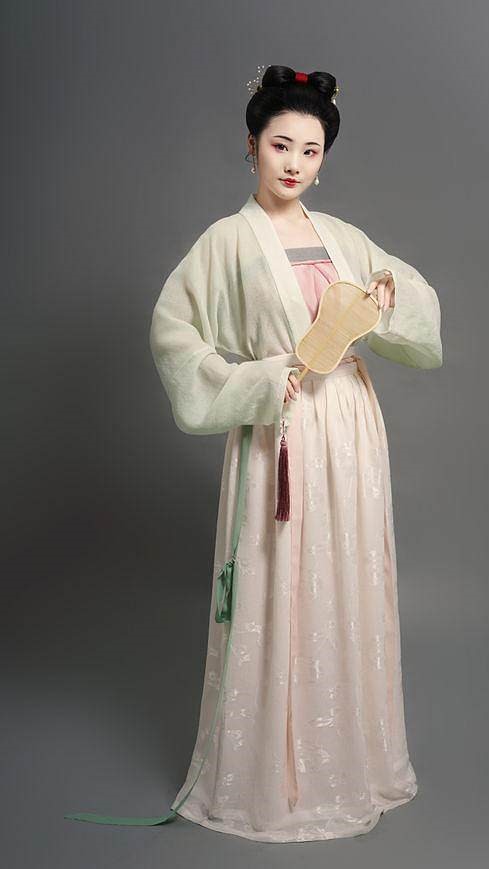
Beizi (褙子 bèi zi)
If there’s one garment that best represents the distinctiveness of Song Dynasty clothing, it has to be the Beizi. This versatile piece was universally loved by people of all ages, genders, and social classes in Song, which is quite an extraordinary feat for any piece of clothing.
Typically featuring a straight collar and open front without buttons, the Beizi came in both wide and narrow-sleeved styles. High slits ran down the sides, and decorative edging adorned the collar, cuffs, and front panels.
Initially favored by maidservants for its open-slits design that allowed easy movement, the Beizi soon caught the eye of the nobility and evolved into a widely worn garment. From queens and concubines to servants and entertainers, everyone in Song society adored the Beizi, often pairing it with long skirts or trousers.
The Beizi’s popularity can be attributed not only to its versatility but also to its alignment with Song Dynasty aesthetics. Wearing a Beizi accentuated a woman’s slender figure, embodying the refined, understated vibe prevalent during the era. This elegant garment was the epitome of Song Dynasty women’s fashion.
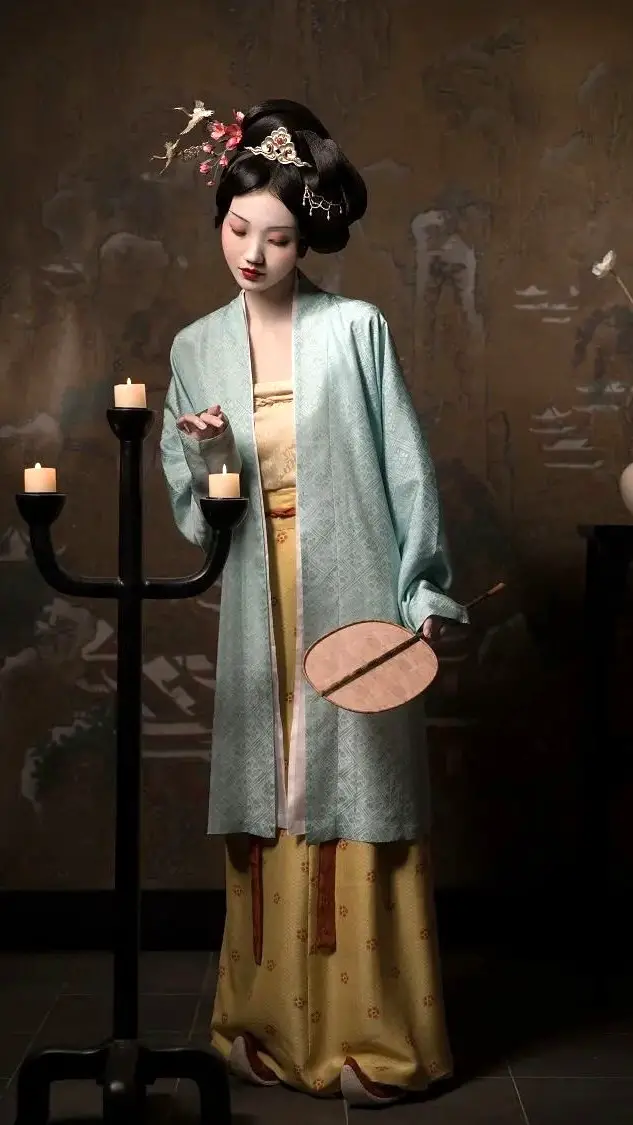
Song Dynasty Clothing for Men
Now that we’ve explored the vibrant and graceful world of women’s fashion in the Song Dynasty. Let’s shift our focus to the sophisticated attire worn by the men of the era. These dapper gentlemen embraced a different aesthetic compared to their Tang Dynasty predecessors, opting for clothing that complemented their penchant for literary pursuits. So, buckle up, and let’s see the captivating realm of Song Dynasty clothing for men.
Fresh Flowers on Hair (簪花 zān huā)
Yep, you didn’t mistake it. Flowers on men’s hair!
According to the historical record, flowers were part of the royal court’s etiquette during the Song Dynasty. Emperor Huizong, in particular, took the trend of “men wearing flowers on hair” to new heights. Every time he returned from an outing, he would be seen in a delicate imperial cap adorned with flowers. He would also bestow flowers upon his ministers and guards.
The emperor’s fondness undoubtedly improved the popularity of flowers on hair among the common people of the Song Dynasty. In the famous novel “Water Margin,” set during the Northern Song Dynasty, several of the 108 brave heroes of Liangshan loved to wear flowers in their hair. Most notably, the 95th-ranked Liangshan executioner, Cai Qing, was so obsessed with wearing flowers that he earned the nickname “Stalk of Flowers.”
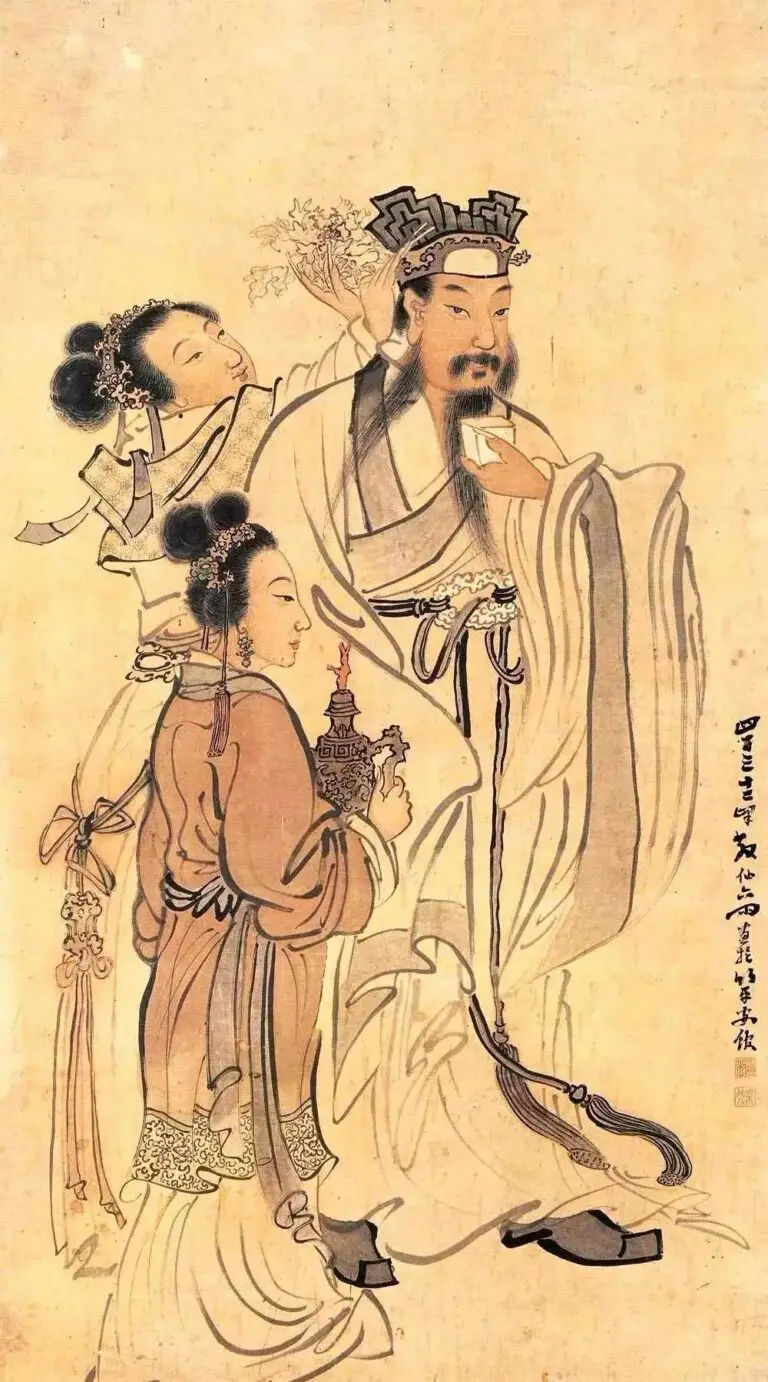
Silk Hat (巾帽 jīn mào)
During the Song Dynasty, scholars and officials loved to wear a variety of silk hats. As the Northern Song Dynasty progressed, numerous styles of silk hats emerged with unique names like Dongpo Hat, Chengzi Hat, Wen Gong Hat, and Xiantao Hat.
The Dongpo Hat, named after the famous poet Su Dongpo, featured a square design with two layers and extended corners on each side. As Su Dongpo’s influence grew, other officials began to imitate his style, donning short-brimmed, high-crowned hats.
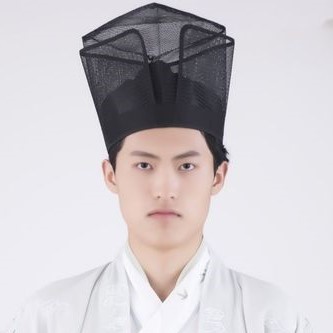
The Chengzi Hat was a style created by Cheng Yi, a famous theorist of Neo-Confucianism. Similarly, the Wen Gong Hat was invented by Wen Gong (also called Sima Guang), a successful historian and politician.

The silk hats Daoist priests wore were called the Xiantao Hat because they looked like peaches and Xiantao means “peach from the Daoism heaven” in Chinese. The popularity of Daosim increased the trend of Xiantao Hat among scholars and their fans.
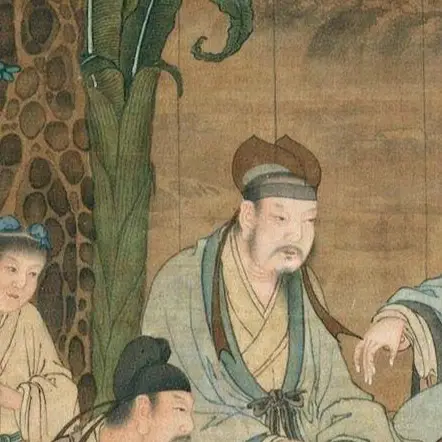
Fu Tou (幞头fú tóu)
The Futou, a distinctive and representative headwear of the Song Dynasty, was commonly worn by officials and emperors. The design featured two long, straight extensions on either side, stretching out horizontally for up to two feet. Craftsmen created a rigid frame using iron wire or rattan, covered it with silk or gauze, and coated it with black lacquer. The two side extensions were also made of iron wire and covered in lacquered gauze, either laying flat or curving upwards.
The unique design of the Futou served a practical purpose in addition to its visual appeal. The extended sides prevented the headwear from bumping into one another, encouraging officials to maintain a certain social distance and discouraging them from whispering or gossiping. This design demonstrates the centralized rule of imperial power.
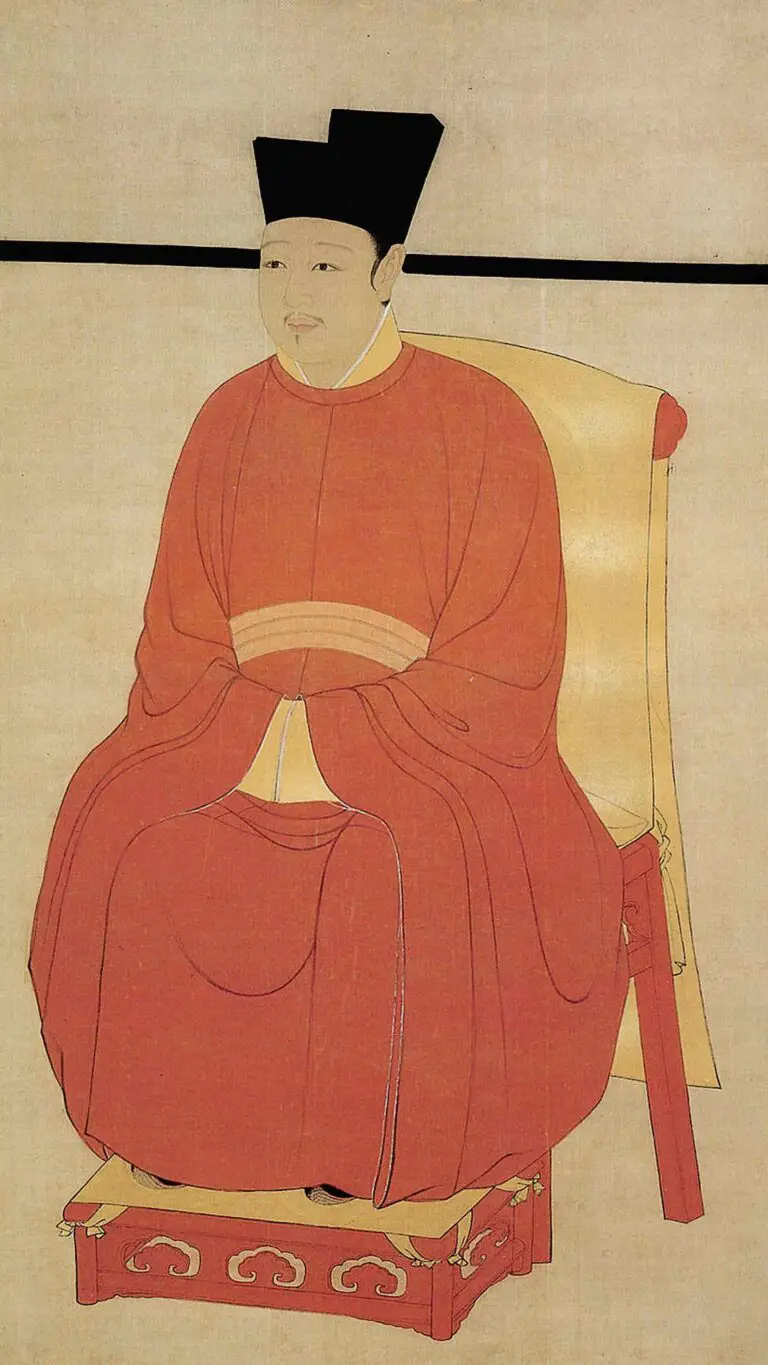
Fang Xin Qu Ling (方心曲领 fāng xīn qū lǐng)
Fang Xin Qu Ling, a circular ornament with a square frame attached to the neckline. It was created by Song Dynasty officials as an attempt to replicate the official attire of the Tang Dynasty. As per Song Dynasty regulations, officials needed to wear Fangxin Qu Ling with their court and ceremonial clothing. It was to prevent the collar from wrinkling and to keep it in place.
Actually, the Tang Dynasty version of Fang Xin Qu Ling was a circular lining attached to the inner garment. The Song Dynasty officials, in their quest for a vintage revival, inadvertently created a unique and innovative “necklace” accessory. Talk about a fashionable misunderstanding!

He Chang (鹤氅 hè chǎng)
He Chang, a luxurious coat made from the feathers of cranes and other birds, dates back to the Jin Dynasty. In ancient China, cranes were considered divine creatures, symbolic of immortality, longevity, and carefree living. Therefore, people believed that the clothes woven from cranes’ feathers were the attire of Daoist immortals.
During the Song Dynasty, with the rise of Daoism, scholars and literati wanted to wear Daoist attire to emulate the ethereal elegance of Daoist priests. The Song Dynasty He Chang was born from that demand. It was made from cloth and hemp, with a design similar to the original He Chang.
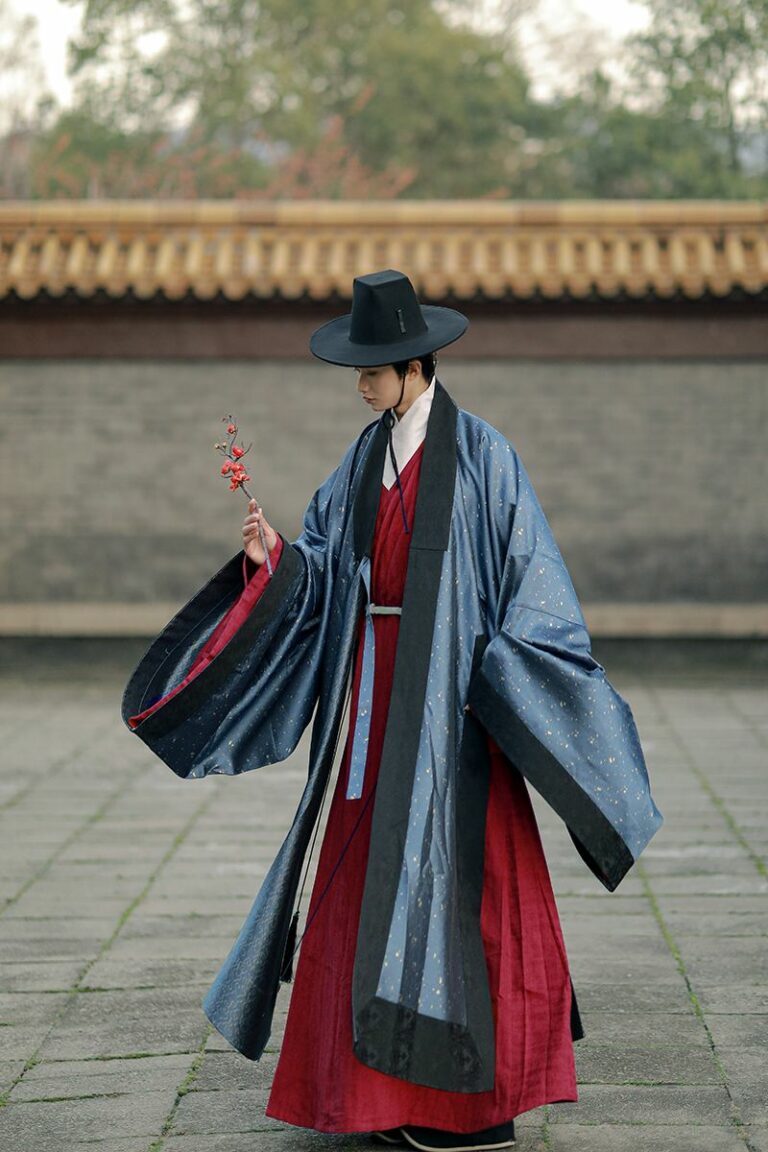
Surprising Song Dynasty Achievements
We’ve navigated through the fashionable realm of Song Dynasty clothing, but our journey doesn’t stop there. We’ll soon be unveiling a treasure trove of astonishing achievements from this remarkable period that will surely leave you amazed. So, stick around, because this intriguing adventure is far from over!
Movable Type Printing
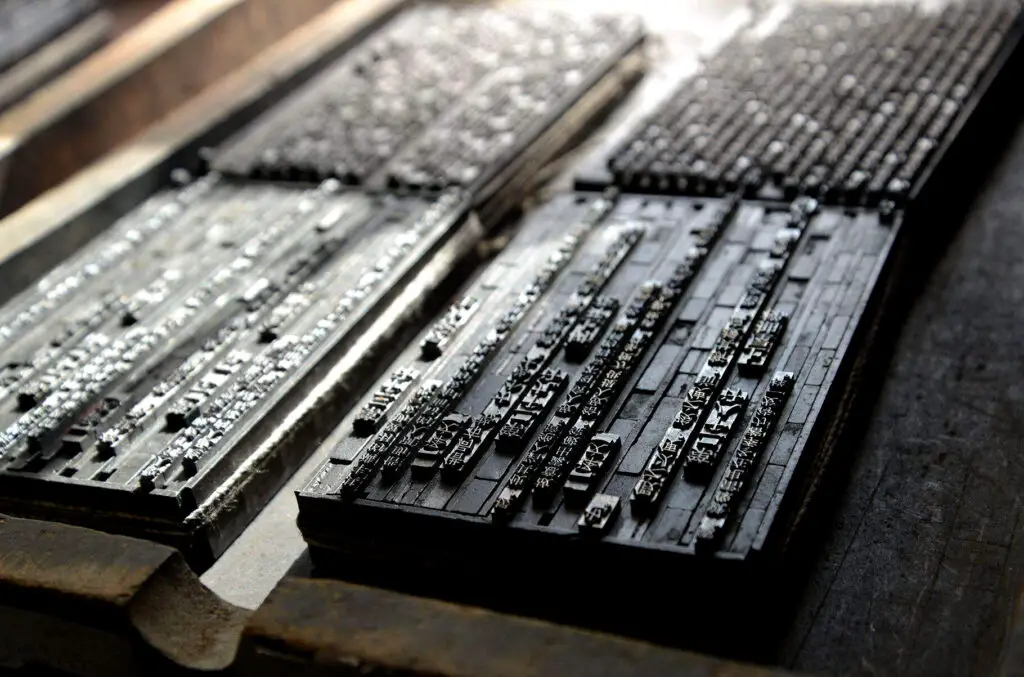
The Song Dynasty witnessed a revolutionary breakthrough in printing technology with the invention of movable type printing by Bi Sheng around 1040 AD. This innovative technique allowed for more efficient and cost-effective book production, spreading knowledge far and wide.
Gunpowder
The discovery of gunpowder can be traced back to ancient China during the Tang Dynasty, around the 9th century AD. During that time, alchemists, in their quest for an elixir of immortality, accidentally stumbled upon a mixture of saltpeter (potassium nitrate), sulfur, and charcoal. When heated, this mixture produced a rapid combustion reaction; thus, gunpowder was born.
By the time the Song Dynasty came to power (960-1279 AD), gunpowder had already been in existence for about a century. Initially, its primary uses were in medicine, alchemy, and for ceremonial purposes like fireworks.
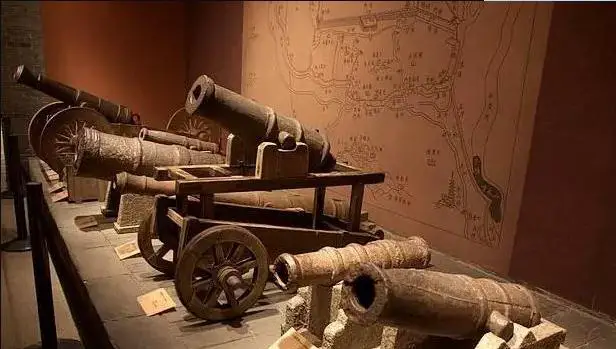
The exact timeline for when the Song Dynasty started using gunpowder for military purposes is not entirely clear. However, most researchers estimated it occurred around the 10th or 11th century. The military use of gunpowder began to gain prominence during the reign of Emperor Shenzong (1067-1085 AD). As the Song Dynasty faced severe external threats, particularly from the Liao and Western Xia dynasties, they sought new ways to defend their territory and gain an advantage over their enemies.
The World's First Paper Money
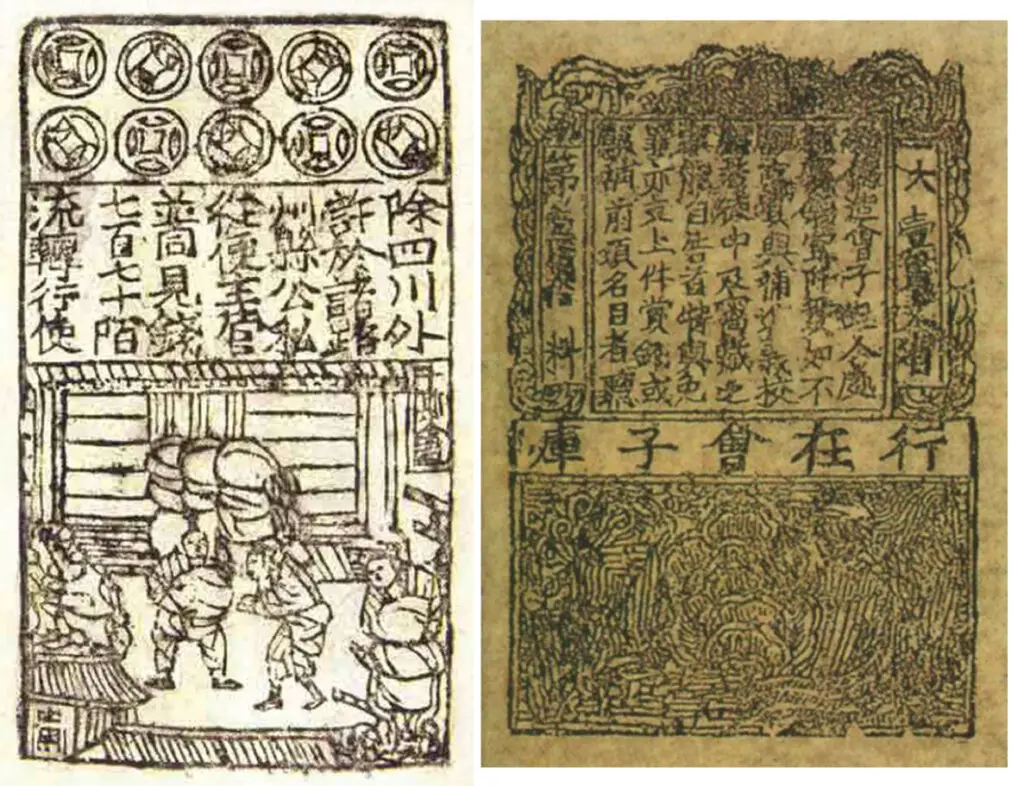
Who needs coins when you’ve got paper? The Song Dynasty was the first to introduce paper currency, known as Jiaozi. This innovative financial system paved the way for modern banking and commerce.
The Boom of Tea Culture
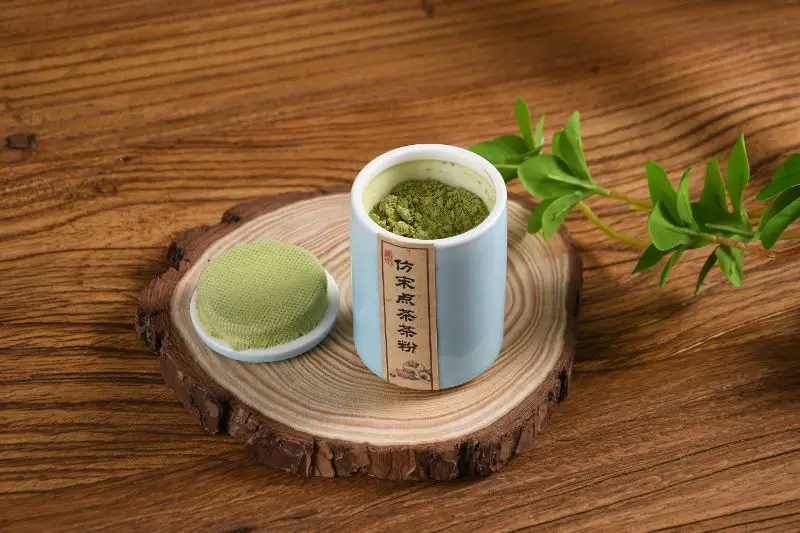
The Song Dynasty was like a giant tea party where everyone, from the emperor to the common folk, could enjoy a good brew.
One major development during the Song Dynasty was the popularization of powdered tea. Unlike the loose-leaf tea we know today, powdered tea was made by grinding tea leaves into a fine powder, which was then whisked with hot water to create a frothy beverage. This technique, known as “Dian Cha,” later inspired the Japanese tea ceremony.
Final Words
Tired of reading? Let’s enjoy a dance from the Song Dynasty and relax~
As we come to the end of our exploration into the restrained and modest beauty of the Song Dynasty, we find ourselves inspired not only by the enchanting clothing, but also by the innovative achievements. Neo-Confucianism shaped the era, and it beautifully showcased the refined sensibilities of its people through their dress and inventions.
Moreover, the Song Dynasty left an indelible mark on history through the flourishing of tea culture, demonstrating the art of savoring life’s simple pleasures. As we conclude our journey through this remarkable period, let us carry forward the lessons of modesty, innovation, and appreciation for the finer things in life.
If you want to learn more about Chinese dress and historical trends, welcome to our “Chinese Dress” and “Historical Fashion” channels. Feel free to leave a comment if you have any questions or ideas about fashion ~ We are always here to exchange brilliant thoughts!


